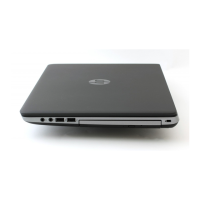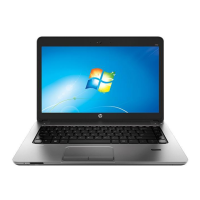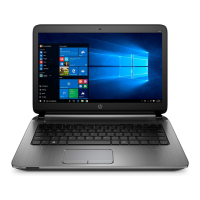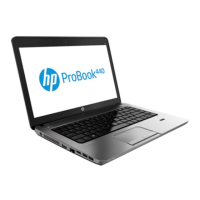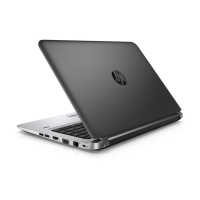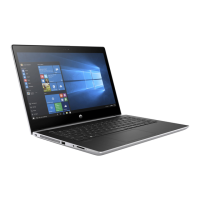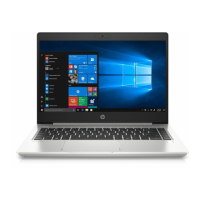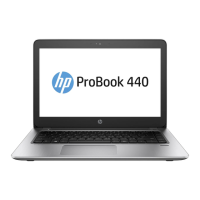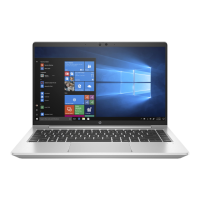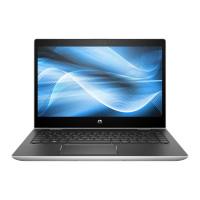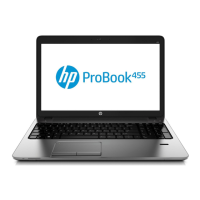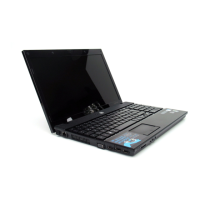
Do you have a question about the HP ProBook 440 14 inch G11 and is the answer not in the manual?
Details product components, including processors, graphics, memory, storage, and ports.
Identifies and describes ports and slots on the right side of the computer.
Identifies and describes ports and indicators on the left side of the computer.
Identifies components located on the display assembly, including cameras and antennas.
Describes keyboard features, touchpad settings, and touchpad components.
Explains the function of special keys like Caps Lock, Fn, and Windows keys, and various indicator lights.
Identifies components located on the bottom and rear of the computer, such as speakers and vents.
Provides instructions for determining SIM card size and inserting a SIM card.
Lists major computer components and their corresponding spare part numbers.
Details spare parts for the display assembly, such as bezels and panels.
Lists various other spare parts, including AC adapters, cables, and accessories.
Describes the contents of screw kits used for component removal and replacement.
Lists the essential tools needed for disassembly and reassembly procedures.
Outlines important precautions for handling parts, cables, and drives during service.
Explains the risks of ESD and provides precautions to prevent component damage.
Covers procedures for cleaning the computer, including using disinfectants and caring for wood veneer.
Provides guidelines for safely packaging and transporting computer equipment.
Guides users on how to find support resources and technical bulletins from HP.
Steps to prepare the computer before starting disassembly for self-repair.
Instructions for safely removing the computer's bottom cover.
Guidance on determining the correct SIM card size and inserting it into the slot.
Steps for removing and replacing memory modules (RAM).
Procedures for replacing WLAN and WWAN wireless modules.
Instructions for removing and installing M.2 solid-state drives.
Detailed steps for safely removing and replacing the computer's battery.
Instructions for removing and replacing the computer speakers.
Steps for removing the fingerprint reader board and its bracket.
Procedures for removing and replacing the system's cooling fan.
Instructions for removing and replacing the I/O board and the SSD board.
Procedures for removing and replacing the WWAN board and the touchpad.
Steps for removing and replacing the heat sink and the main system board.
Procedures for removing the display assembly, bezel, panel, and top cover.
Methods for creating system recovery media using Windows or HP tools.
Steps and methods for restoring the system to a previous state or factory settings.
Instructions on how to modify the computer's boot order through the startup menu.
How to navigate, select options, and exit Computer Setup menus.
Steps for determining the BIOS version and downloading/installing updates.
Information on accessing and modifying Trusted Platform Module (TPM) settings for security.
Overview of HP Sure Start technology for BIOS protection and recovery.
How to use the Windows-based diagnostic tool to check hardware functionality.
Instructions for running diagnostics using the Unified Extensible Firmware Interface (UEFI).
Information on customizing and using remote diagnostics settings via BIOS.
Details dimensions, weight, operating voltage, current, and environmental specifications.
Provides technical specifications for the computer's display panel.
Lists specifications for different capacities of solid-state drives.
Steps to restore nonvolatile memory and reset BIOS settings to factory defaults.
Information on nonvolatile memory types and how to manage or erase data.
Addresses common questions regarding BIOS settings, UEFI, and memory configuration.
General power cord requirements, including length, approval, and current ratings.
Details specific power cord requirements and certifications for various countries.
Guidance on proper disposal and recycling of batteries and electronic hardware.
